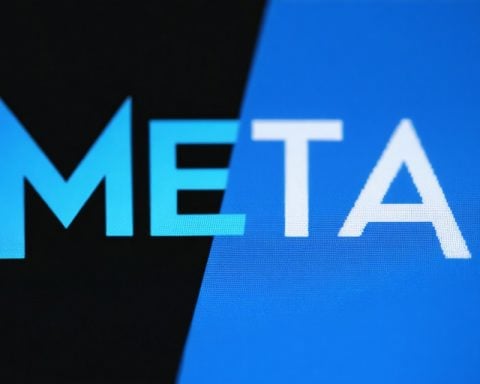Recently, Nvidia has climbed to an unprecedented market value of $3.6 trillion, making it the most valuable company in history. This remarkable achievement has led to heightened anticipation among investors who are eagerly awaiting Nvidia’s upcoming earnings report.
Wall Street Expectations: Analysts predict that Nvidia will report a significant revenue increase, expecting $33.2 billion for the October quarter, marking an 83% rise from the previous year. Adjusted earnings per share are projected at 75 cents, with an outlook that the January quarter could bring in $37.1 billion and earnings per share of 82 cents. Investors are keen to see if Nvidia meets these high expectations.
Blackwell Supply Demands: Details on Nvidia’s production ramp for their newest GPU architecture, Blackwell, are highly anticipated. Customers are already placing orders up to a year in advance, indicating demand far outstrips supply. The key question remains how much Nvidia can produce by 2025.
Leadership in Data Centers: Nvidia’s dominance in data center solutions continues unchallenged by rivals like AMD and Intel. Their GB200 NVL72 AI system, featuring 72 Blackwell GPUs, remains in high demand for cutting-edge AI model training. Investors seek clarity on Nvidia’s strategies for expanding its leadership, whether through innovation or partnerships.
Impact of Trade Policies: Prospective policies could influence Nvidia’s operations. Possible tariffs on products manufactured in Asia are a concern, while relaxed export restrictions could offer growth opportunities in the Middle East.
Nuclear Energy’s Role: As Nvidia’s AI data centers demand continuous power, nuclear energy is touted by CEO Jensen Huang as crucial to supporting AI growth. Investor interest centers on potential developments in nuclear energy support.
Overall, maintaining a long-term perspective on Nvidia’s performance and growth potential is essential, given the inherent volatility of high-growth stocks.
Nvidia’s Skyrocket to $3.6 Trillion: What Lies Beyond the Hype?
Nvidia’s recent surge to an astonishing $3.6 trillion market value has captivated the investment community. But beyond the headlines and projections, what does this mean for everyday lives, communities, and global markets?
Impact on Everyday Technology: With Nvidia being at the forefront of GPU technology, the ripple effect of their success is evident in consumer technology. From gaming consoles to laptops, the demand for high-performance graphics capabilities has soared. The new GPU architecture, Blackwell, not only supports advanced gaming but also enables more efficient artificial intelligence processing in a variety of consumer tech, including smartphones and smart home devices.
Economic Implications for Local Communities: The rise in Nvidia’s market value has also impacted local economies, particularly in regions hosting their data centers and manufacturing plants. Jobs in tech-oriented roles, from software development to engineering, have surged, offering enhanced career opportunities. However, communities heavily reliant on Nvidia face risks associated with the volatility of tech stocks and the potential relocation of facilities, should geopolitical tensions dictate such moves.
Environmental Considerations: While the push for nuclear energy to fuel Nvidia’s data centers is an innovative step towards sustainability, it raises critical questions about environmental trade-offs. Nuclear energy, though reducing carbon emissions, poses concerns about waste management and ecological risks in the event of accidents. As Nvidia grows, their environmental footprint becomes a contentious topic.
Technological Divide: With Nvidia’s technology advancing at a rapid pace, a question arises about the accessibility of these powerful processing units. As AI becomes more integrated into daily life, will socio-economic disparities widen, with only affluent individuals and communities able to afford cutting-edge technologies? This divide could impact education, healthcare, and economic opportunities, reinforcing existing inequalities.
Advantages and Disadvantages:
– Advantages:
– Enhanced computing power for AI and machine learning.
– Economic growth in tech hubs associated with Nvidia’s development.
– Potential for cleaner energy solutions with nuclear power support.
– Disadvantages:
– Increased environmental risks with nuclear energy.
– Potential socio-economic divide due to technology accessibility.
– Economic vulnerability for communities reliant on Nvidia’s ups and downs.
Questions to Consider:
– How will global trade policies shape the future of semiconductor industries?
– Can alternative energy sources keep up with the growing power demands of AI data centers?
– What steps can be taken to mitigate the technological divide?
Overall, as Nvidia continues to shape the technological landscape, the implications reach far beyond stock portfolios. The company’s growth trajectory presents both opportunities and challenges that must be navigated thoughtfully to ensure equitable progress for all.
For more information on Nvidia and its vast impacts, please visit Nvidia.






















